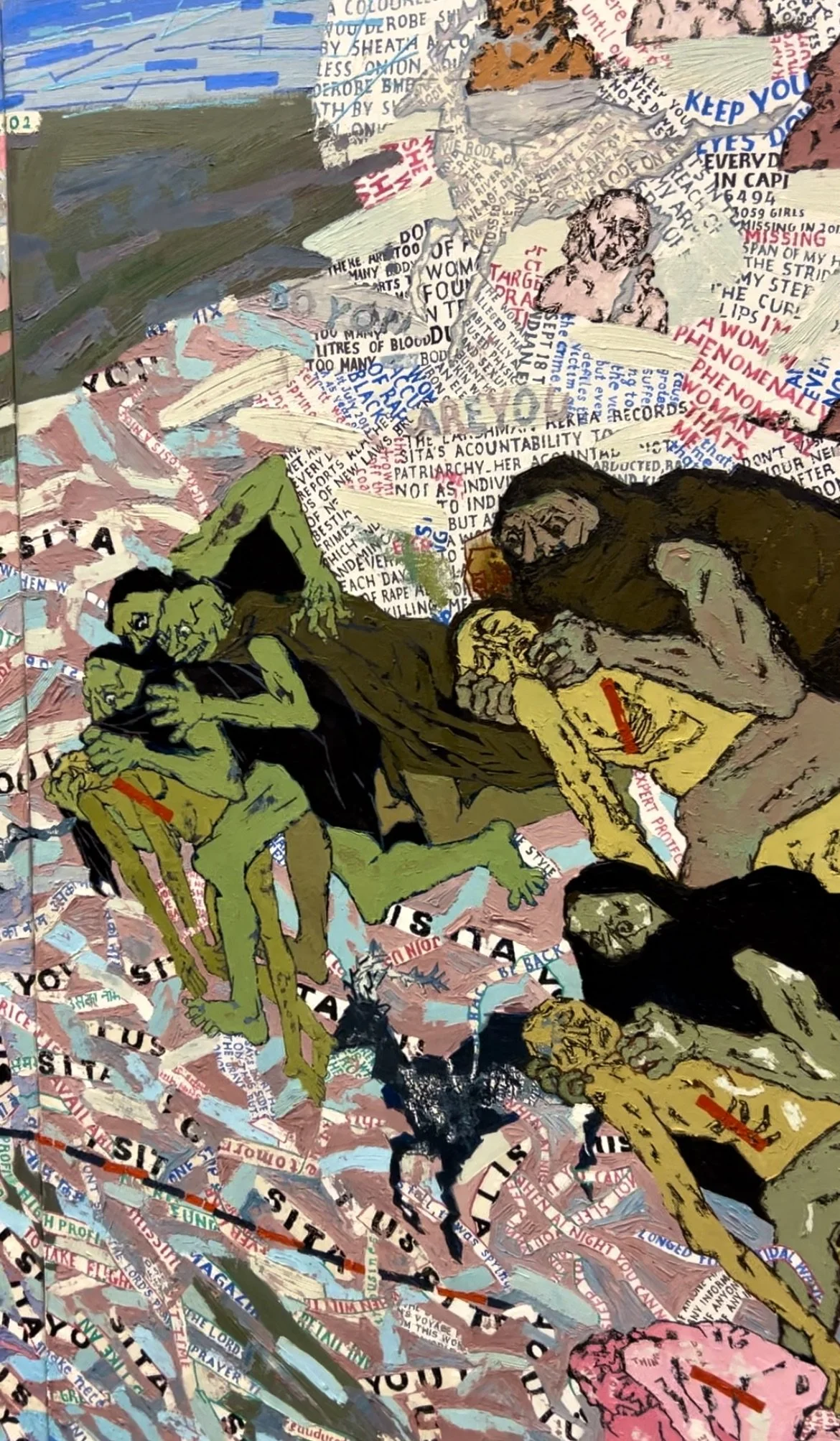Aurelia Reviews: Arpita Singh “Remembering” at the Serpentine Gallery
This retrospective feels like interrupting somebody else’s dream: disjointed, absurd, intimate. Then it consumes you, and suddenly, you’re dreaming too. But this dream is very real, reflecting both the best and worst of humanity.
“Remembering draws from old memories from which these works emerged. Whether I am aware or not, there is something happening at my core. It is how my life flows.”
– Arpita Singh
Arpita Singh, My Lollipop City, Oil on canvas, 2005
The leafy approach to the Serpentine North quietens your brain, as you enter the heart of the Kensington Gardens and a more awakened state of mind. Serpentine North mustn’t be confused with the Serpentine South, on the other side of the river, which confuses even the most seasoned exhibition-goers. I started off my visit at the café, enjoying a cuppa with a friend on a slightly breezy, overcast spring afternoon. (Incidentally, the café is actually a great place to work, if you don’t mind the gentle hum of conversation). Like all Serpentine exhibitions, it is free to enter.
First impressions
Singh’s work, with its surreal symbolism, personal pain, and vivid, unapologetic palette, felt like encountering a modern-day, Indian Frida Kahlo. However, as I saw more, it became clear that Singh is not echoing anybody. Her world is entirely her own - messier, more fragmented, and fiercely rooted in her own memory and the female body.
This comparison came to mind, because I found her work difficult to unpack at first. Singh makes so many references to topical and terrifying events in the world, and indeed cutting social commentaries. But these are fused with deliberate ambiguity and playfulness. Interweaving the outer world, with her own inner world, is what makes Singh’s work so truly unique. She also draws from Bengali folk art, fusing imaginative narratives with lived experiences of social upheaval. Singh’s distinctive candy palette with lots of pink is almost childlike, but it does not generate comfort. It seduces the eye whilst simultaneously unsettling the mind. Numerous contrasts and tensions are present: between the feminine and the masculine; the beautiful and the ugly; the good and the evil; the internal and the external.
Arpita Singh, Untitled, Oil on canvas, 1999
Curator’s corner
If you are interested in the curatorial, angle listen up.
The supporting booklet is more interesting than most, as it takes you through the show in an unconventional manner. You are guided by a polyphony of voices, not just one – and by those most familiar with Singh’s practise. Friends, colleagues and art historians have written comments on chosen artworks within the exhibition to provide varying perspectives. As one can interpret her imagery in infinite ways, I enjoyed this addition. I also enjoyed that the guide even explained itself at the start.
Remembering is not over-explained or rigidly directing the visitor. This is not a chronological retrospective, nor a simplified demonstration of “greatest hits”. It shows the breadth of her work, from large oils to small watercolours and prints, through the decades in a fluid manner. There is an organic circularity within the space, with the two smaller rooms intersecting the main cube, to allow an osmosis of people through the different areas, but always starting and finishing at the same point in the circle. This is reflective of the circularity in Singh’s practice and the way in which certain motifs reappear over and over again.
Paintings which speak
Singh’s use of materials is equally expressive as her subject matter. Her canvases are built up with dense layers of oil paint, and impasto textures. These layers are scraped, stamped and decorated with marks that are almost wounding the brushwork. Text is stamped across like a labelling system or scrawled across like a confession. Some artworks are so rich with text they are practically speaking themselves. The result is a surface somewhere between a poster and a textile. Singh did actually work at the Weavers' Service Centre (Ministry of Textiles) in New Delhi, and you can really observe this design background in her work.
Arpita Singh, Whatever is Here, Oil on canvas, 2006
Better late than never
By choosing to spotlight an artist long celebrated in India but under-recognised in the global art scene, the Serpentine makes a positive statement about expanding the canon. Remembering features key works spanning more than six decades, from the 1960s to the present, but this is Singh’s first solo show at a major institution outside India. Singh’s retrospective offers a vital perspective at a time in which conversations about the politics of care are gaining momentum. We are invited to see through the lens of a woman, now in her late 80s, who was never aligned with dominant narratives. In today’s global climate where war, gender-based violence remain painfully present, Singh’s work feels urgent. However, her paintings do not offer easy answers, but fractured mirrors which show that challenges of the past are resurfacing in the present.
Arpita Singh, My Lily Pond, Oil on canvas, 2009
Remember…
Singh’s dreamlike (or nightmarish) paintings give voice to the emotional lives of women, capturing the tension between the personal and the political. In a world increasingly shaped by uncertainty and threat, her work mirrors the internal dialogues many of us carry - balancing private anxieties with the weight of global unrest. Her work is a vehicle to reflect upon memory, and we are encouraged to linger, to feel, and to remember with care.




